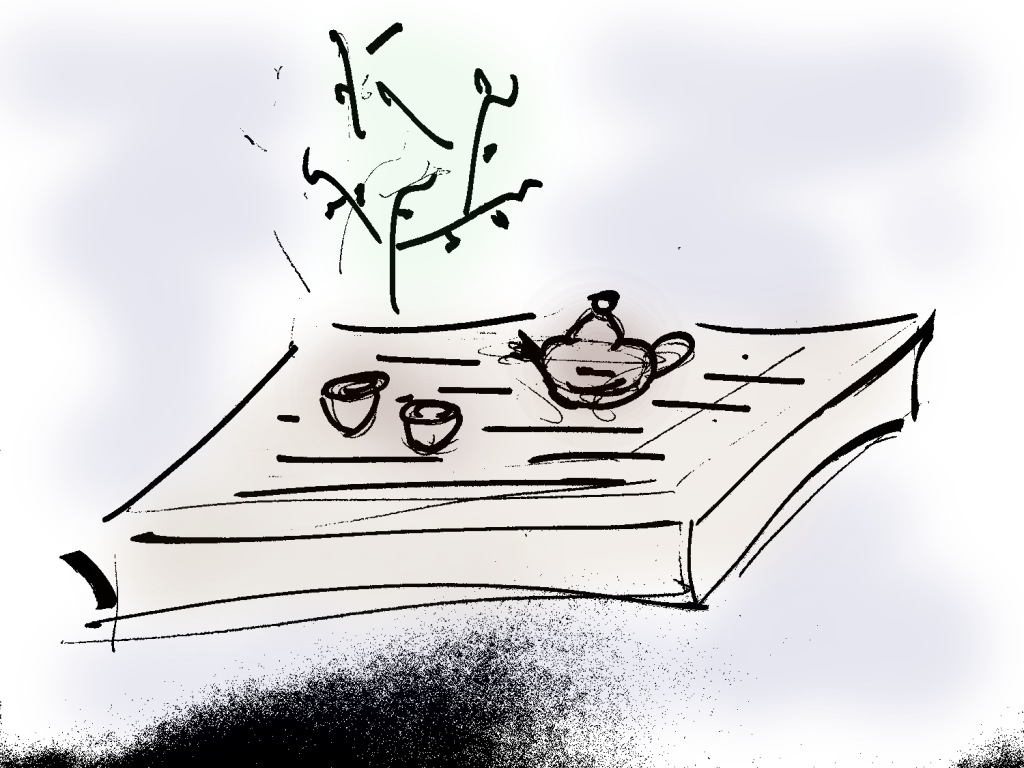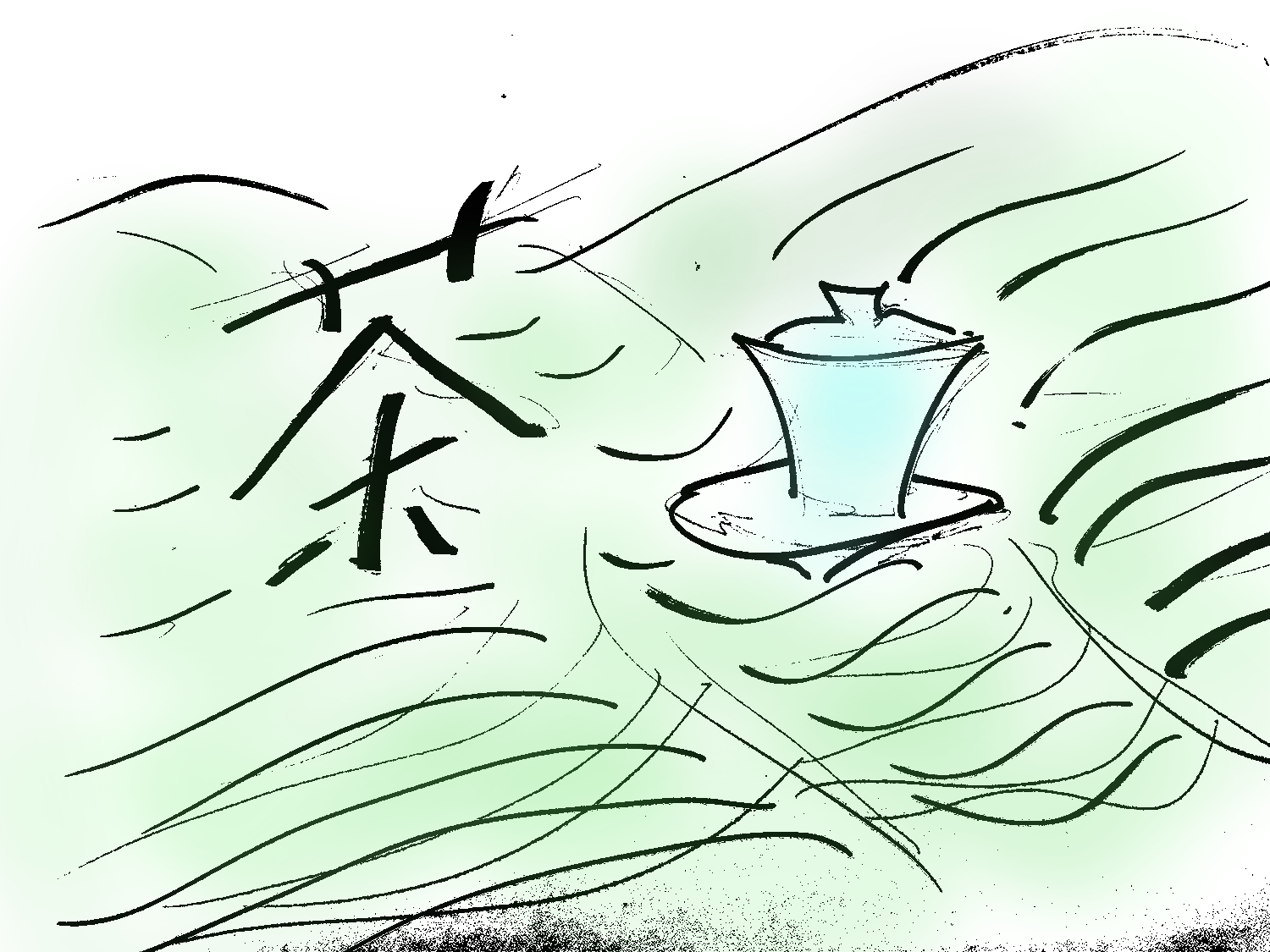Every once in a while, it’s good to take a break from alcohol. This is a good opportunity to have a look at other drinks: Tea, in this case! In this tea primer, I’ll try to explain the different families of tea, and how they are produced.
I’m lucky that I could learn a great deal about tea from Meng-Lin Chou. She is possibly one of the most knowledgeable people in Europe when it comes to oolong teas. Visit her store in Zurich, and check out her blog!
Tea Plant
It is a common misconception that green tea and black tea are different plants. In fact, all the different teas are made from the same plant, the Camilia sinensis. If left to grow, it will become a tree of several metres high, but it can be cultivated into an easy to harvest bush.
This one plant, however, has several hundred varieties. Very much like apples, the ones that produce the most sought-after teas can be easily cloned with cuttings. When left to reproduce naturally, the DNA of the new plants and thus their taste changes.

Tea Primer: Production
There are seven families of tea, depending on how the leaves are processed after harvest.
Note that in the Western world, the words oxidisation and fermentation are often used to describe different processes in tea production. In fact, in tea production, fermentation means that the enzymes in the leaf oxidise other matters in the leaf. I will henceforth thus use the term oxidisation for this process.
If the tea leaves are heated in a process called killing the greens, these enzymes are deactivated, preventing further oxidisation. There are some teas, however, that are fermented in the same way that cheese and wine are fermented, by the use of microörganisms rather than the already-present enzymes.
Some teas are also rolled: During this process, the cell walls are destroyed, and aromatic oils are freed. These teas will release their aromas faster when brewed.
- White tea. The leaves left to wilt (oxidised), and then dried. No further processing. It’s called white because of the little white hairs on the buds. They usually have a floral aroma with honey notes.
- Green tea. The leaves are dried, then the greens are killed. After that, they may be rolled or flattened, and then dried again. No oxidisation occurs. Chinese green teas usually have a grassy, hay-like aroma with nut notes from roasting. Their Japanese counterparts may also have some maritime aromas.
- Yellow tea. The production is similar to green tea, but the leaves are covered before the final drying so that some oxidisation occurs. During this process, the leaves yellow, hence the name. The taste is similar to red tea, but lighter.
- Oolong. This tea left to wilt in the sun, and are then cooled in the shade. They are then partially oxidised for a few hours. After that, the greens are killed, then the leaves are rolled and dried again. Depending on how long they are oxidised, they can range from floral aromas like lilys to fruity aromas like apricots.
- Red tea from China. They are wilted, rolled, fully oxidised and dried. They usually have notes of leather, cocoa and ripe fruit.
- Note that technically, teas from India are usually called black teas in the Western world, even though they fall into this category.
- Black tea from China. This is the only tea that is truly fermented by introducing microörganisms, and is thus often called post-fermented tea. The most famous of these are puer teas from Yunnan province. Before the fermentation occurs, teas are produced similarly to white teas.
- The fermentation occurs naturally with time, due to the microörganisms on the leaves of the plant. This is called sheng. However, this process takes ten years or more, and if left for longer, will develop tastes of rain on hot stone and cellars, with impressive depth. Younger teas in this category can be floral with some good bitterness.
- In order to speed up the processes, the fermentation can be artificially induced by stacking the tea leaves about a metre high in a damp, warm environment for about 3 months. They may be aged more, after this. These teas is called shu, and such teas have a pungent, earthy taste.
- Both teas may be pressed into cakes. In sheng teas, this will slow down maturation as opposed to lose leaf teas.
- Scented tea. These are teas that are flavoured with flowers, aromatic oils or other substances.
Quality indicators
Tea, much like wine, can come in many different degrees of quality. Some criteria that influence the final quality are the following:
- Do the come leaves from gushu (wild) or taidi (cultivated) plants? While it’s hard to say that one is better than the other, it is more common for taidi plants to be of lesser quality. At the same time, some very famous tea trees such as da hong pao (big red robe) have been cloned with cuttings. Tea made from the original plant are prohibitively expensive, and there are high-quality teas made from clones with the same DNA.
While this sounds great, the plants from cuttings lack the primary root, and thus cannot penetrate the earth as deep as plants from seeds. They thus get less nutrients, and will not develop the same taste. - As for wine, the quality of tea also depends a lot on the terroir in which it is grown. The tea tree from misty mountains, with calciferous soil, tend to produce excellent tea. It is very possible to get the same variety of tea from different regions with different taste.
- Tea can be harvested several times per year, whereas spring harvests are the most priced for green teas; whereas the leaves for the best oolong are harvested later in the year. This is so that the leaves are big enough to withstand the strenuous production.
- Finally, the quality of production is essential. Teas can be harvested, rolled, roasted by hand or by machine; and especially in oolong production the producers must have great experience to know when to apply which process.
History
Tea was consumed around the 11th and 8th century BC already in the region that is now south west China. From there it spread among the Jangtse river. By 617 AD (Tang dynasty) it was part of everyday life, and was particularly embraced by Chan-Buddhists, who used it to keep themselves awake during night and ritualised its consumption. During that time, we was usually pressed into cakes and then simmered.
The Song dynasty (960-1279) was a time of peace and thus cultural and economical wealth for China. During this time, tea flourished. The preparation moved to grinding the tea cakes, and dissolving them with a brush in water. It was also during that period that Japanese monks learned about tea and brought it back to Japan. Even today, Japanese matcha tea is still prepared by dissolving finely ground tea in water.
The preparation of tea in China changed again in the Ming dynasty (1368-1644): Tea leaves were steeped in water, and this method of preparation was cherished for its simplicity. The famed yixing clay for tea pots was also discovered in this period.
Finally, tea was first brought to continental Europe by either the Dutch or the Portuguese in the 17th century, and from there spread to the UK. The English then cultivated tea in India in order to become less dependent on Chinese exports.
